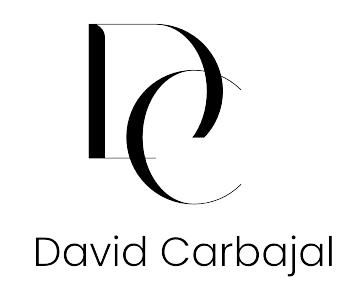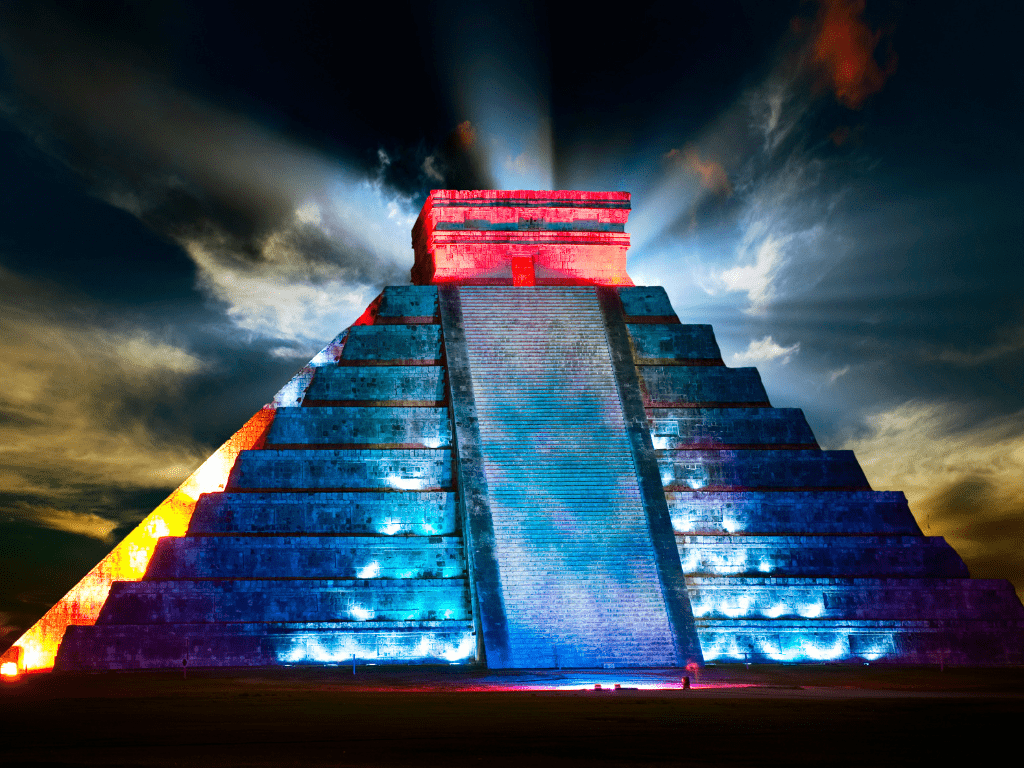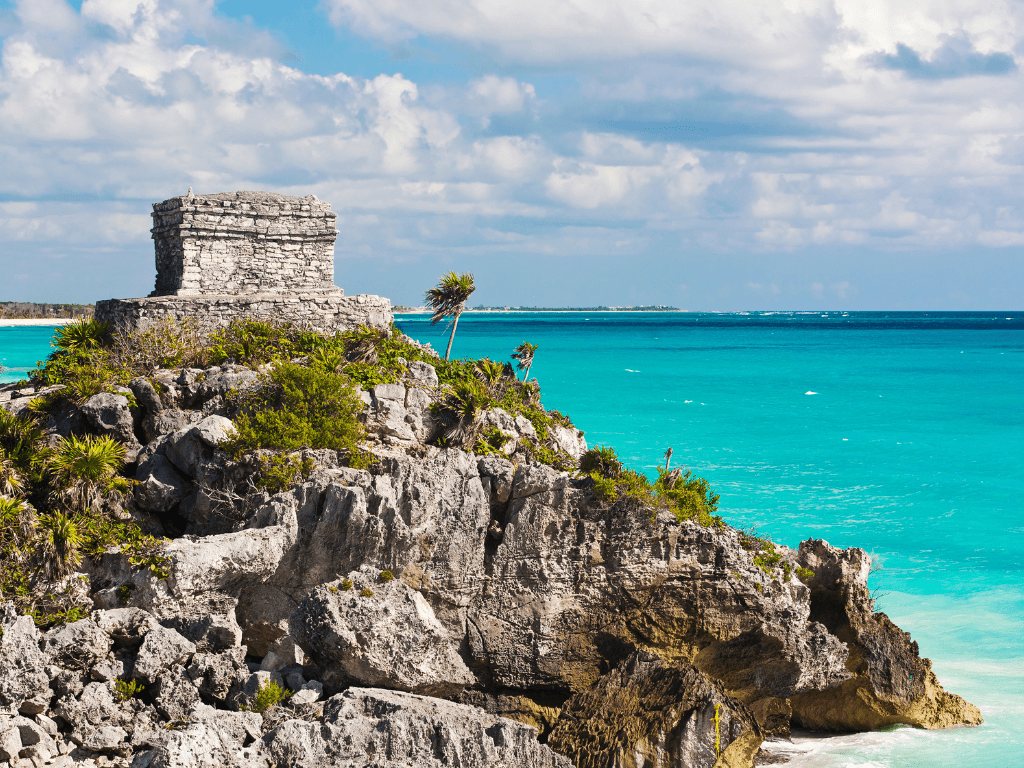Exploring the Coba Ruins: A Journey Through Ancient Mayan History
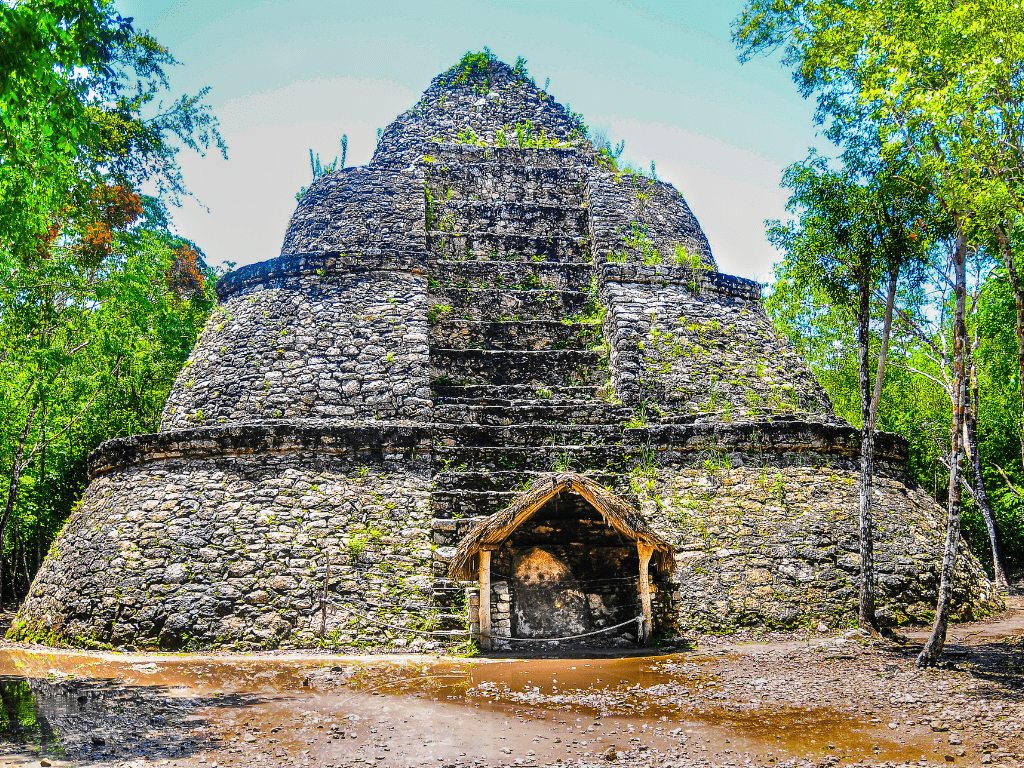
The Significance of Coba in Mayan History
The Coba ruins are an ancient city located in the dense jungles of the Yucatan Peninsula in Mexico. At its height, Coba was one of the largest Mayan cities with a population estimated to have reached over 50,000 people.
The city was established during the Classic period and thrived until it was ultimately abandoned around 1100 AD during the Postclassic period. The ruins are significant because they reveal important insights into Mayan architecture, religion, social organization, and daily life.
Location and Layout of the Ruins
The Coba ruins span an area of nearly 80 square kilometers (31 square miles) and are situated around two lagoons known as Lake Macanxoc and Lake Cobá. The site is located about 44 kilometers (27 miles) northwest of Tulum and about 122 kilometers (76 miles) east of Chichen Itza.
The city is believed to have been a major trade hub between other major cities such as Tikal in present-day Guatemala, which is approximately 300 kilometers (190 miles) south. The layout of the city includes several monumental buildings that were constructed on elevated platforms to protect them from flooding during heavy rainfall.
These structures include three major pyramids called Nohoch Mul, Cobá Group, and Macanxoc Group. These pyramids served as political centers for religious ceremonies, trade negotiations, and public gatherings.
The ruins also include dozens of smaller temples or dwellings that are spread throughout the jungle surrounding these central structures. Overall, exploring Coba offers visitors a glimpse into an ancient civilization’s lifestyle that was once a bustling center for politics and trade during a critical time in human history.
History of Coba
Overview of the Rise and Fall of the Mayan Civilization
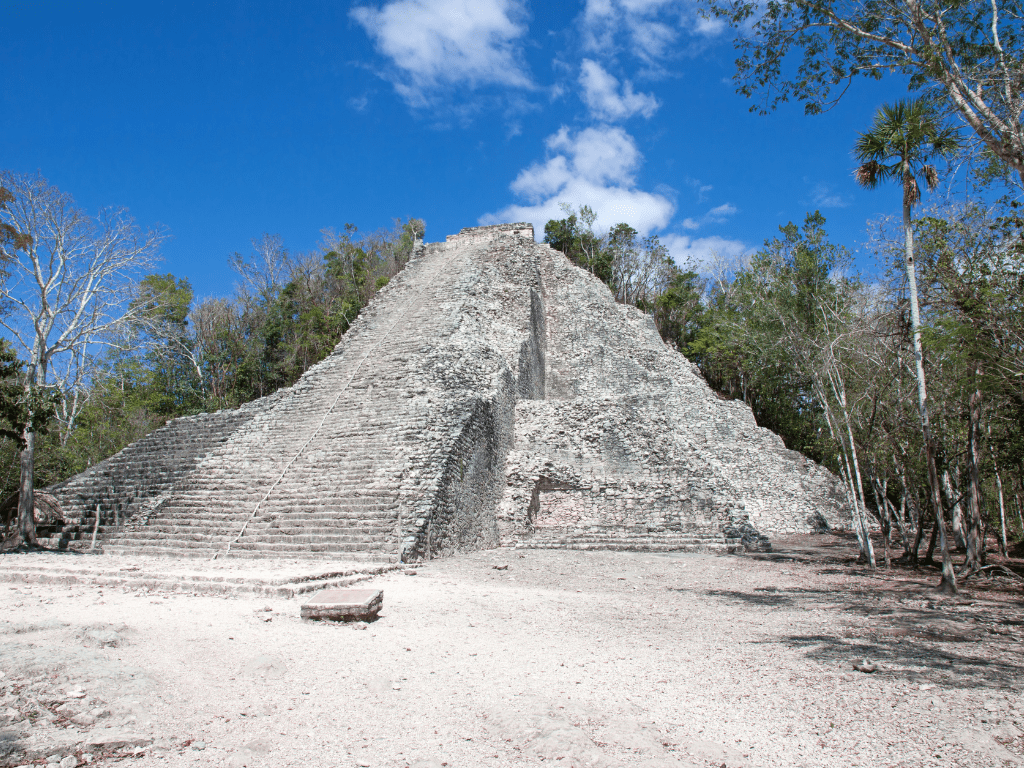
The Maya civilization developed in Mesoamerica about 4,000 years ago. It reached its peak between 250 and 900 AD, during which time it flourished with incredible advances in art, architecture, astronomy, mathematics, and writing.
The Maya thrived in the Yucatan Peninsula until around 1200 AD when they experienced a rapid decline. This decline remains a mystery to many historians; theories include environmental devastation caused by droughts or disease brought by European explorers.
Detailed History of Coba, Including Its Founding, Growth, and Eventual Decline
Coba was one of the largest and most powerful Mayan city-states on the Yucatan Peninsula between 600-900 AD. The city was founded around 100 BC by a group of farmers who established small settlements around several lagoons for agricultural purposes. By 600 AD, Coba had grown into a major city-state with an estimated population of over fifty thousand people.
The city had extensive trade networks that extended from modern-day Belize to Guatemala. Coba’s decline began in the late 9th century when it suffered attacks from other Maya groups like Tikal and Calakmul.
According to archaeological evidence such as burned buildings and fortifications surrounding the site perimeter show continued warfare at Coba until approximately mid-14th century. Despite its eventual downfall,Coba left behind an impressive legacy that has made it one of Mexico’s most important archaeological sites today .
Architecture and Design
Coba is known for its unique and impressive architectural features that have drawn thousands of visitors to the site every year. The ruins are scattered across a vast jungle landscape, and visitors can explore the ruins on foot or rent bicycles to ride through the dense foliage.
Description of the unique architectural features
One of the most striking features of Coba is its network of stone roads that connect various structures throughout the site. These roads, called sacbeob in Mayan, were constructed by lining up large stones edge-to-edge in a straight line.
The largest sacbe at Coba stretches over 62 miles (100 kilometers) and connected Coba with other important Mayan cities. The towering pyramids found at Coba are also impressive engineering feats, some standing more than 130 feet (40 meters) tall.
These pyramids were built using a step-pyramid design, where each level was slightly smaller than the one beneath it. This allowed workers to build each level using smaller stones that could be more easily carried to the top.
In addition to pyramids, Coba also has several ball courts where Mayans played their traditional ball game called pok-ta-pok. These courts are rectangular in shape and have sloping walls on both sides that lead up to a horizontal stone ring mounted on each wall.
Analysis of how these structures were built with primitive tools and techniques

The Mayans did not have access to modern building tools like cranes or power tools when constructing their buildings at Coba. Instead, they used simple hand tools made from stone, wood, or bone to cut and shape large blocks of limestone into usable building materials.
Workers would first quarry limestone blocks from nearby hillsides using picks made from deer antlers. They would then shape these blocks into specific sizes using stone chisels before hauling them up to the construction site using ropes and rollers.
The Mayans were also adept at using a special type of mortar made from limestone, water, and sap from local trees. This unique adhesive allowed them to construct buildings that have withstood centuries of weathering and seismic activity.
Overall, the architecture and design of Coba is a testament to the ingenuity and resourcefulness of the Mayan people. Their ability to construct impressive structures using only simple tools is a marvel that continues to inspire visitors today.
Daily Life at Coba
Social Structure
The Mayan society was stratified, with the ruling elite at the top and peasants and slaves at the bottom. At Coba, the nobility lived in large multi-roomed buildings made of stone and stucco, while commoners lived in smaller huts made of wood and thatch. The ruling class held a monopoly on political power and controlled access to resources.
Religious Practices
Religion was an integral part of Mayan daily life, with rituals performed for everything from agricultural activities to warfare. At Coba, temples were dedicated to various gods such as Chaac, the god of rain, and Ixchel, the goddess of fertility. Priests played a central role in these ceremonies.
Economic Activities
The economy at Coba was based largely on agriculture. The Mayans planted crops such as maize, beans, squash, and chili peppers using slash-and-burn techniques.
They also hunted game such as deer and turkey for protein. Trade was also important; Coba was situated near several trade routes that linked it to other Mayan cities.
Use of Natural Resources
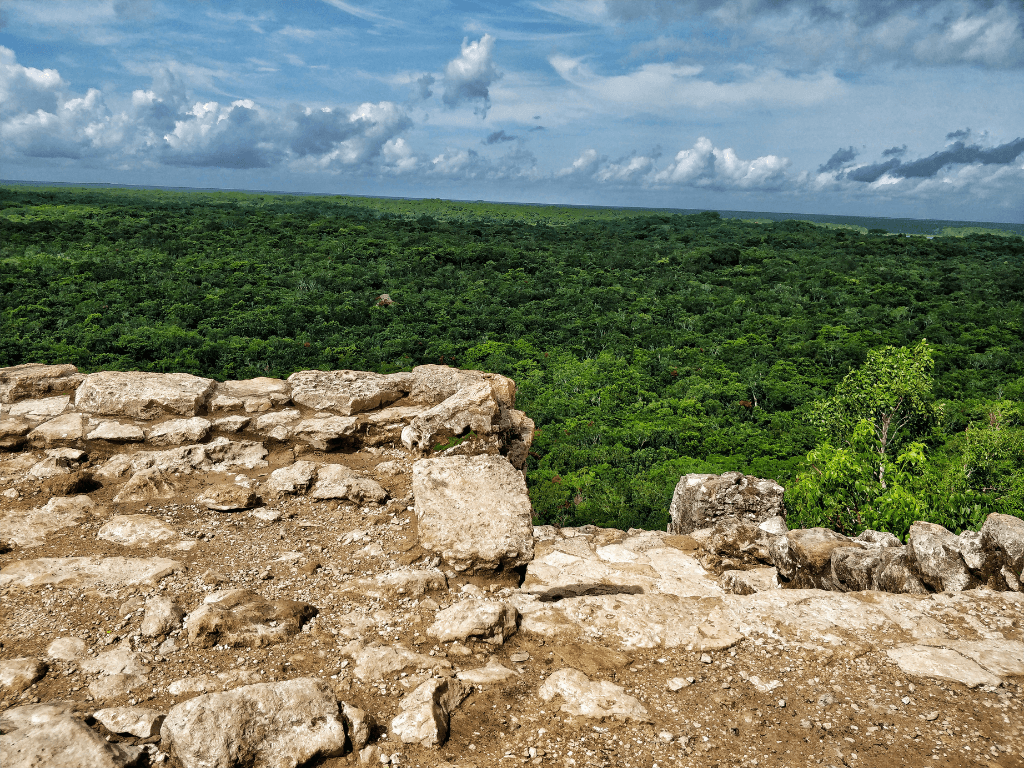
The Maya used natural resources in a sustainable manner to support their way of life. For example, they built agricultural terraces on hillsides to prevent soil erosion.
They also constructed extensive systems of canals and reservoirs for water management. Wood from surrounding forests was used for construction purposes but was carefully managed so as not to deplete resources over time.
Daily life at Coba provides insight into how this ancient civilization functioned on a day-to-day basis. From social structure to religious practices to economic activities and use of natural resources – everything contributed towards creating an organized society that thrived for centuries before ultimately declining due to environmental degradation or other factors.
Exploration Tips for Visitors
Visiting the Coba ruins is an unforgettable experience, but it can be overwhelming due to its vast size and complex layout. Here are some tips to help visitors make the most out of their visit:
Suggestions for visitors on how best to explore the ruins
One of the best ways to explore Coba is by renting a bike or hiring a bicycle taxi from one of the numerous rental stands at the entrance. The site covers over 40 square kilometers, so being able to move around quickly and easily is crucial. Another great option is hiring a local guide who can offer valuable insight into Mayan history and culture.
Recommended routes to take through the site
A popular route that many visitors take starts at Nohoch Mul Pyramid, which is one of Coba’s tallest structures and offers breathtaking views from its summit. From there, visitors can continue along Sacbe 1, which leads past several ancient ball courts and ends at Macanxoc Group, a cluster of smaller structures that offer an interesting look into Mayan daily life.
Information on guided tours or self-guided exploration options
Coba offers both guided tours and self-guided exploration options. Guided tours can be booked in advance through various travel companies or at the entrance gate on arrival.
These guided tours provide a more in-depth understanding of Mayan history and culture as well as access to areas that are not open to all visitors. On the other hand, self-guided exploration gives visitors more flexibility when it comes to exploring the ruins at their own pace.
Exploring Coba requires planning ahead in order to make sure you get most out of your visit. By following these tips, you’ll be well on your way to experiencing the magic and mystery of this ancient Mayan city.
Lesser-Known Facts About Coba
Coba was a bustling city during the Mayan civilization, and while it is known for its towering pyramids and intricate carvings, there are lesser-known facts about this ancient city that visitors might find intriguing. Here are a few examples:
Unique Artifacts Found at Coba
One of the most fascinating aspects of the ancient Mayan civilization is their incredible skill in crafting intricate artifacts from stone, wood, and other materials. At Coba, archaeologists have unearthed many unique artifacts that provide insight into the daily lives of its inhabitants. Some notable examples include intricately-carved stelae (standing stones), ceramic vessels adorned with detailed paintings, and even an ornate jade mask thought to have been worn by a high-ranking member of the ruling class.
Lesser-Known Customs Practiced by Coba’s Inhabitants
The ancient Mayans had a rich culture with many customs that varied from region to region. While some customs were widely practiced throughout the civilization, others were unique to particular cities or tribes. At Coba, there were several lesser-known customs practiced by its inhabitants that visitors might find interesting.
For example, it is thought that the city had a complex system of roads and communication networks that allowed messages to be relayed quickly across long distances. Additionally, some historians believe that Coba was one of the few Mayan cities where women held positions of power and influence within society.
Theories About Why Coba Declined
The decline of the Mayan civilization remains one of history’s greatest mysteries. While we know that many factors likely contributed to their downfall (including environmental degradation, warfare with rival tribes/civilizations, disease outbreaks), the exact reasons for their decline are still unclear. At Coba, there are several theories about why the city eventually fell into decline.
Some historians believe that the city’s rulers became too corrupt and oppressive, leading to unrest among the populace. Others suggest that the city simply grew too large to be sustainable, leading to resource scarcity and ultimately collapse.
Conclusion
Summary
The Coba ruins are an incredible testament to the rich history and culture of the ancient Mayan civilization. From its towering pyramids to its intricate carvings, Coba offers a unique insight into the architectural and artistic achievements of this fascinating civilization. Additionally, exploring the daily lives of the Mayans who lived in this once-thriving city provides further understanding of how they lived and interacted with their environment.
Visitors can explore Coba through guided tours or self-guided exploration options, with recommended routes that enable visitors to fully appreciate all that this magnificent site has to offer. Those looking for lesser-known facts will also enjoy learning about unique artifacts found at Coba or lesser-known customs practiced by its inhabitants.
A visit to the Coba ruins is an unforgettable experience for anyone interested in history, archaeology, or cultural anthropology. The site serves as a reminder of the impressive achievements of ancient civilizations and shows how they managed to thrive in an often-challenging environment through ingenuity and resourcefulness. Please keep in mind the Yucatan is scattered with Mayan ruins. Check out our list of the 8 most important Mayan ruins.
